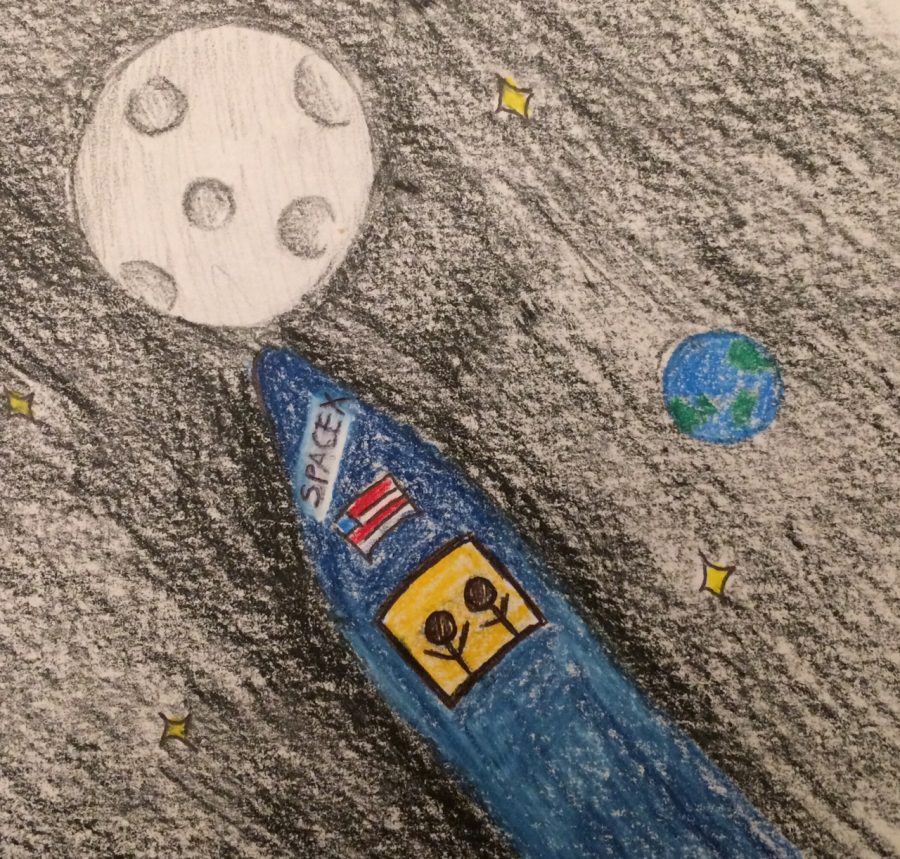Civilians in Space
April 7, 2017
With the recent discovery of seven Earth-sized planets forty light-years away, endless possibilities await human advancement and knowledge in the massive Milky Way galaxy. Since the Space Race in the 20th century, aerospace research and exploration has expanded internationally, especially in nations such as the United States, Russia, China, and India. One private company, SpaceX, is seeking to revolutionize space transportation; recently, the corporation announced its plan to send two civilians to orbit the moon within two years.
SpaceX’s announcement to launch a private mission to circumnavigate the Moon is momentous; the last time a man landed on the moon was during the Apollo 17 mission, in December 1972. According to the company, the two private citizens have already paid a large deposit; initial training as well as health and fitness tests will begin later this year.
Regarding transportation, SpaceX will utilize the Dragon 2 spacecraft as well as the Falcon Heavy rocket. Plans are already underway in preparation for the expedition; the Falcon Heavy is due to launch its first test flight this summer. If successful, the rocket will become the most powerful vehicle to reach orbit, with the ability to lift into orbit over 54 metric tons (119,000 lb), a mass equivalent to 737 jetliners loaded with fuel, passengers, crew, and luggage.
SpaceX also plans on test-launching the Dragon 2 (also known as the Crew Dragon) spacecraft to the International Space Station later this year without any individuals on board. If successful, a subsequent mission with crew is anticipated to fly in the second quarter of 2018. The company asserted that NASA has been crucial this developmental process; without the agency’s Commercial Crew Program, which provided the majority of the funding for developing the Dragon 2, the expedition would not be possible.
With the first space flight for civilians, SpaceX will make history in pioneering space tourism and paving the path for more expeditions to the moon, and possibly other celestial bodies. Although the project’s tight timeline hinges on the success of the spacecraft’s tests, the orbit will hopefully bring the first manned SpaceX team with the first civilian astronauts to the ISS. CEO Elon Musk remains hopeful that the mission will usher in an era of easier and cheaper space travel. In its announcement, the corporation stated that “by also flying privately crewed missions, which NASA has encouraged, long-term costs to the government decline and more flight reliability history is gained, benefiting both government and private missions.”
Several Ridge students have voiced their excitement for SpaceX’s news. Lia Garrett ‘18 exclaims, “Something all physics students dream about is applying their knowledge gained in the classroom to deepen their perspective of reality. SpaceX is doing exactly such and going above and beyond, moving us towards cheaper and more accessible trips into space, which is astronomical (pun intended). In the past, the ability to travel to space with ease seemed like a dream; now it’s the future.”
Eric Tung ‘19 also revealed his enthusiasm for the rocket launch: “This idea of going into the vast beyond seems very appealing to me. I would be greatly honored to have the opportunity to experience an endeavor such as this.”
SpaceX’s historic announcement of bringing two civilians to the moon within two years may be the critical catalyst for regular space tourism and continued technological advancements. If successful, the mission would also lead the company a few steps closer to its ultimate goal of taking humans to Mars. Although such an expedition for civilians is far off, humans are certainly on the path to deeper space mission operations and innovations in the near future.
The Dragon 2 and the Falcon Heavy are just two recent examples of major progressions in space technology. If the Dragon 2 expedition is successful, it would be the first time in 45 years for humans to breach the dark, vast sea of oblivion surrounding Earth, otherwise known as outer space. Thanks to SpaceX and NASA’s shrewd initiatives, the future for relatively inexpensive and frequent space travel seems bright.

